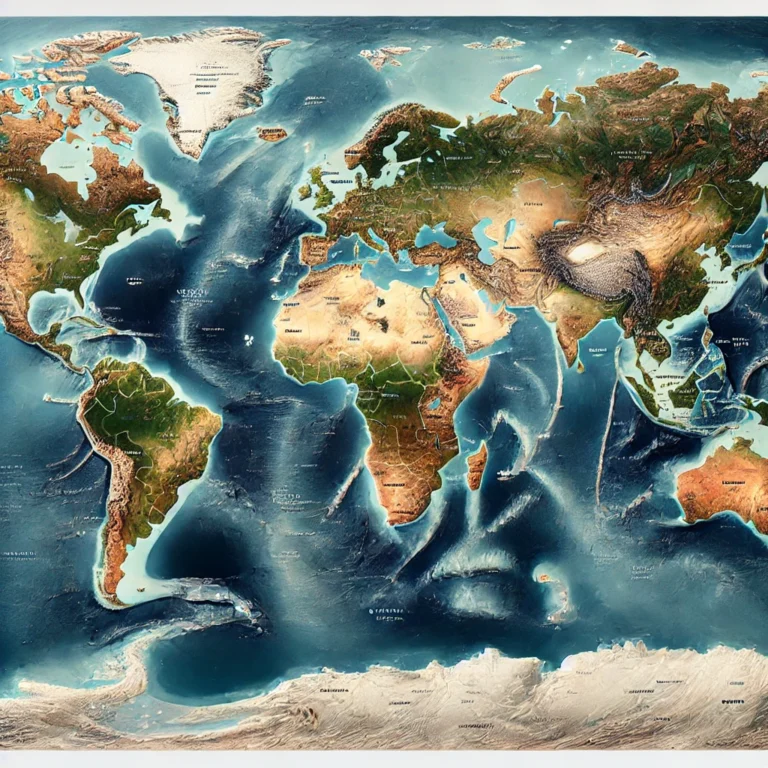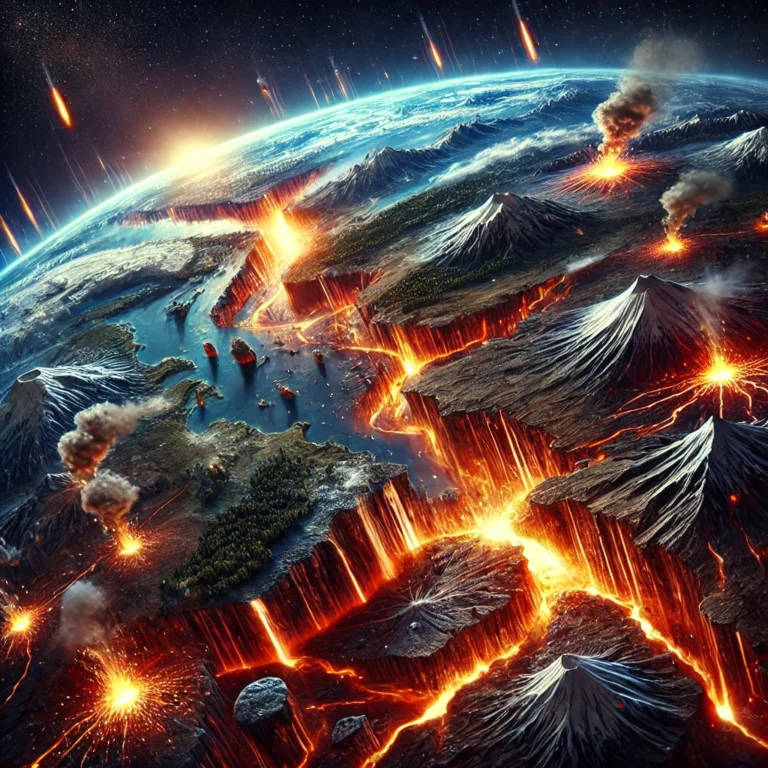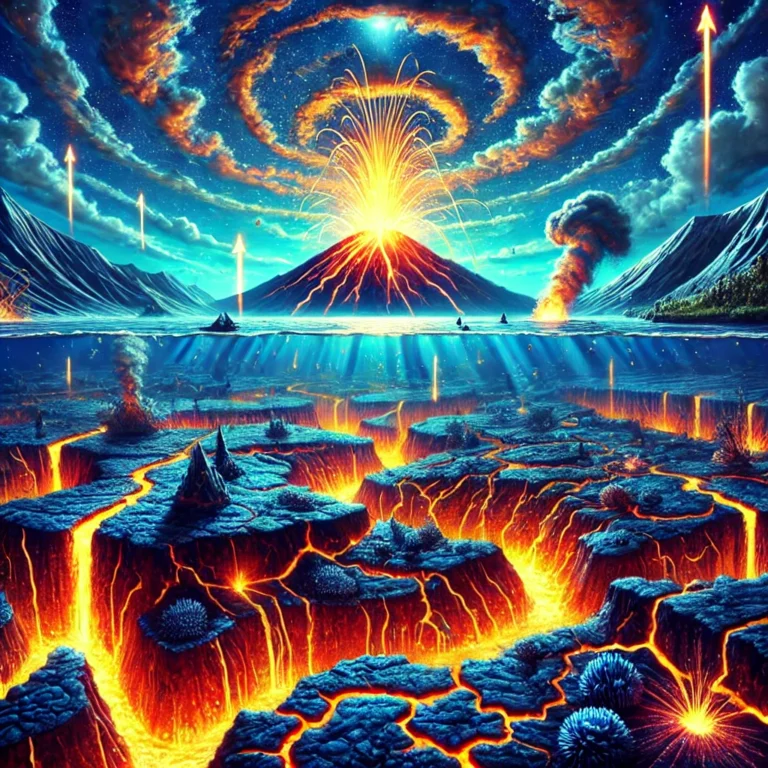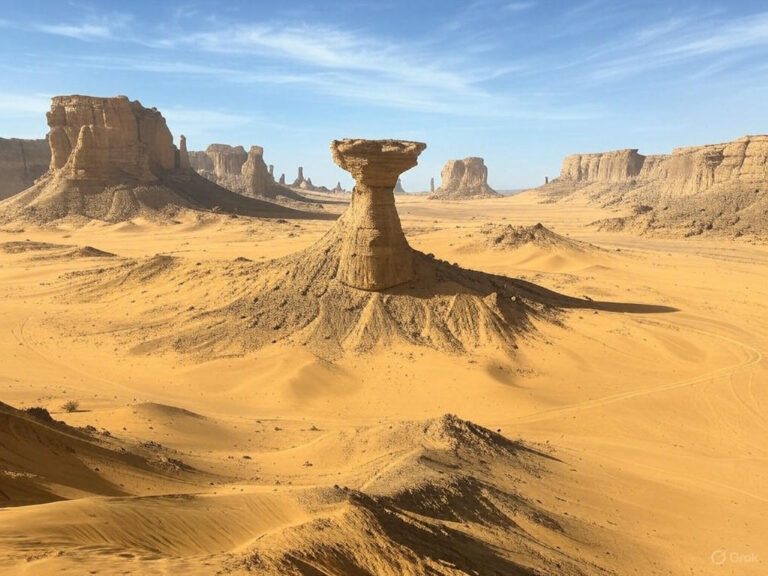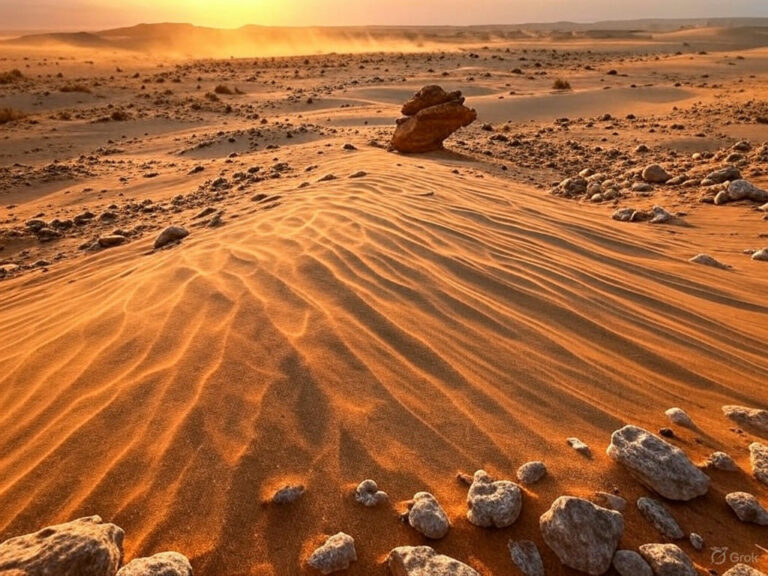Overview of South America Continent
To understand the physiography of South America, let’s stick to a golden rule that never fails: “Begin from the borders—the water bodies—then move inward to understand the core physiography.” This method gives us a mental scaffold to visualize not just landforms, but also their interconnectedness with climate, rivers, and human activity.
Imagine sketching a rough outline of South America. Even a freehand map, though not to scale, can become a powerful asset in UPSC exams. For orientation, start from the Amazon Basin—not just because it’s the world’s largest tropical rainforest, but because it sits like a beating heart at the center of the continent. From this anchor point, we explore outward in all directions.

🌊 Coastal and Peripheral Features
Let’s first travel along the northern and northeastern coastlines. Here lies Venezuela, perched at the continent’s top, facing the Caribbean Sea. It is home to Lake Maracaibo, a vast, oil-rich basin and one of the continent’s largest natural lakes. As we trace the coast eastward, we reach the northeastern arc of Brazil, where South America bulges into the Atlantic. At this protruding edge, the Equator slices across the continent, pouring enormous volumes of freshwater into the ocean via the mighty Amazon River. Just inland lies the Guiana Shield, stretching across Guyana, Suriname, and French Guiana, made of ancient crystalline rocks that are geologically among the oldest on Earth.
Swinging around to the northwestern edge, the continent connects to North America via the Isthmus of Panama. This is where Colombia acts as a geopolitical bridge between two worlds, with both Caribbean and Pacific coastlines. Heading down the Pacific coast, we pass Ecuador and Peru, two nations that cling to the western slope of the Andes, with narrow coastal plains squeezed between the mountains and ocean.
At the southern extremity, the land tapers into the windswept archipelago of Tierra del Fuego, culminating at Cape Horn, a stormy maritime gateway into the Southern Ocean. Offshore, the Falkland Islands (Islas Malvinas)—a British Overseas Territory—stand as a point of both ecological richness and geopolitical contention.
Now let’s shift to the western coastal strip, a zone of stark contrasts. This narrow corridor is influenced by the cold Humboldt Current (also called the Peru Current), making it arid, foggy, and cool, despite being in the tropics. It’s also highly seismically active, lying atop the Nazca Plate which dives beneath the South American Plate, fueling the tectonic rise of the Andes Mountains. Important port cities like Callao (Peru) and Valparaíso (Chile) act as lifelines to the Pacific world.
📏 Geopolitical and Latitudinal Markers
South America straddles key latitudinal zones that define much of its geography. The Equator slices through its northern half, passing through Ecuador, northern Brazil, and southern Colombia. This belt receives high solar radiation, moisture, and rainfall, making it the cradle of the Amazon Rainforest, often referred to as the “lungs of the planet.”
Further south, the Tropic of Capricorn runs through the Gran Chaco, Pantanal, and Brazilian Highlands, serving as a climatic divider. It marks the transition into semi-arid and savannah landscapes, which experience more pronounced dry seasons. Dominating the entire western margin is the Andes range, often dubbed the “Spine of the Continent.” This massive cordillera influences not just weather and water systems, but also biodiversity and population distribution.
🗺️ Key Countries and Features
Among the 12 sovereign countries, Brazil 🇧🇷 stands out in both size and influence. With Brasília as its capital, it occupies nearly half the continent and is globally known for its rich biodiversity, Amazon coverage, and mineral wealth.
In the northeastern tip lies French Guiana 🇫🇷, a unique territory governed by France and home to the Guiana Space Centre, the primary launch site for the European Space Agency, thanks to its proximity to the equator.
To the west of French Guiana is Suriname 🇸🇷, known for its tropical forests and a significant Indian-origin population, tracing its roots to colonial indentured labor migration. Guyana 🇬🇾, another neighbor, also has a substantial Indian diaspora and has recently attracted attention due to its emerging offshore oil reserves.
Venezuela 🇻🇪, once a wealthy petrostate, has suffered economic instability and hyperinflation, even launching a cryptocurrency—the Petro—to sidestep currency collapse. Colombia 🇨🇴, with a coastline on both oceans, acts as a bridge to Central America and has a diverse landscape of mountains, rainforests, and high plateaus.
Moving south, Ecuador 🇪🇨, with its capital Quito, is notable for its high elevation and equatorial location. Peru 🇵🇪, once the heart of the Inca civilization, is home to Machu Picchu and the Peruvian Andes. Finally, Chile 🇨🇱—a narrow ribbon of land running down the Pacific—is often compared in shape to Kerala, with its long, slender coastal alignment.
📌 Special Geography Facts
- South America has two landlocked countries: Bolivia and Paraguay.
- Interestingly, Chile and Ecuador are the only countries that do not share a border with Brazil.
- Despite being neighbors on the map, Uruguay and Paraguay do not share a border—they are separated by Argentina 🇦🇷, which stretches like a wedge between them. (And yes, Argentina is home to Messi for all you football buffs!)
🌊 Surrounding Water Bodies
South America is surrounded by a triad of water bodies that shape its climate, trade routes, and biodiversity:
- Atlantic Ocean lies to the east, receiving major river discharges like the Amazon.
- The Caribbean Sea flanks the north, shaping the cultures of northern coastal nations.
- On the west, the Pacific Ocean meets the Andes, making this margin a tectonic hotspot with rich fishing grounds (thanks to the Humboldt Current).
Physiographic Divisions of South America
To truly grasp South America’s geography, we must dissect it through its natural structure. Just like North America, South America is neatly divided into four broad physiographic divisions: the narrow Western Coastal Pacific Strip, the towering Andes Mountains, the expansive Central Lowlands, and the ancient Eastern Highlands. Each of these landforms not only defines the physical landscape but also shapes the ecology, climate, settlement, and economy of the continent.

1. Western Coastal Pacific Strip
Let’s begin at the margin. The Western Coastal Pacific Strip is a narrow ribbon of land squeezed between the Andes and the Pacific Ocean. At its widest, it stretches merely 80 km, and at points, it shrinks to just 8 km. Despite its slender frame, this region holds immense significance. Bounded by the cold Humboldt Current, the strip remains dry and arid, especially in places like northern Chile—home to the Atacama Desert, one of the driest places on Earth. Yet, paradoxically, this coast is dotted with vibrant ports like Callao and Valparaíso, making it crucial for Pacific maritime trade.
2. The Andes Mountains – The Spine of the Continent
As we move inland, we run into the mighty Andes—the longest continental mountain range in the world, extending over 7,000 km from Venezuela in the north to Chile and Argentina in the south. This colossal wall of mountains is not uniform; it’s divided into Northern, Central, and Southern Andes. The Northern Andes traverse Colombia, Ecuador, and Venezuela; the Central Andes dominate Peru and Bolivia; and the Southern Andes lie mostly within Chile and Argentina.
What makes the Andes geologically fascinating is its origin—it was formed by the convergence of the oceanic Nazca Plate with the continental South American Plate. This continental-oceanic subduction gives rise to intense seismic activity, frequent earthquakes, and volcanic eruptions. Peaks like Mt. Cotopaxi, Chimborazo, and Ojos del Salado stand as fiery reminders of this tectonic tension. At the heart of the Andes lies the Altiplano Plateau, shared by Bolivia and Peru, which also houses Lake Titicaca—the highest navigable lake in the world.
And towering above all is Mount Aconcagua, the tallest peak in the Andes, a dream climb for mountaineers and a crucial marker in physical geography.
3. Central Lowlands – The River-Woven Heart of the Continent
Sandwiched between the Andes to the west and the Eastern Highlands to the east lies a vast swathe of flat terrain—the Central Lowlands, also called the Interior Plains or Amazon Basin. These lowlands are more than just geographical voids; they are the fluvial soul of South America.
The Amazon Basin, fed by the mighty Amazon River and its countless tributaries like the Negro, Madeira, Tocantins, and Xingu, drains the world’s largest tropical rainforest. This entire region lies near the equator, receiving intense heat and high humidity year-round. That’s why it witnesses daily convectional rainfall, especially in the afternoons—a pattern so regular it’s famously called “4 PM Rainfall.”
To the north lies the Orinoco Basin, primarily in Venezuela, which drains eastward into the Atlantic through flat deltaic plains. Meanwhile, to the south, the Paraná–Paraguay–Uruguay river system carves through Brazil, Paraguay, and Argentina. These rivers are not only vital for irrigation and biodiversity but also for hydroelectricity, with the Itaipú Dam being one of the world’s largest energy producers.
Within this central zone also lie the Pantanal Wetlands—the planet’s most extensive tropical wetland—and the Gran Chaco, a semi-arid expanse marked by thorny scrub vegetation, found across Paraguay, Bolivia, and Argentina. Together, these regions offer a blend of ecological richness and strategic utility.
4. Eastern Highlands – The Ancient Core
Finally, the Eastern Highlands form the cratonic backbone of the continent. These are some of the oldest geological formations in South America, carved out from two principal blocks: the Brazilian Highlands to the southeast and the Guiana Highlands to the northeast.
The Brazilian Highlands are marked by a series of step-like plateaus such as Serra do Mar and Serra da Mantiqueira. This elevated terrain is the cradle of major rivers like the São Francisco and Paraná. Not only are these lands mineral-rich—with iron ore, gold, and other deposits—but they also sustain dense human populations and agricultural belts.
The Guiana Highlands, stretching across Venezuela, Guyana, Suriname, and French Guiana, are home to surreal natural wonders like Mount Roraima (which inspired Arthur Conan Doyle’s The Lost World) and Angel Falls, the world’s highest uninterrupted waterfall.
Together, the Eastern Highlands represent the stable core of South America’s ancient continental crust, standing in contrast to the youthful, dynamic Andes to the west.
These four physiographic divisions—the narrow Pacific coast, the formidable Andes, the riverine lowlands, and the ancient eastern highlands—combine to give South America a unique geographical identity. From earthquakes in the Andes to rainfall in the Amazon, and from mineral wealth in the Brazilian Highlands to the hydrological power of the Paraná Basin, each region plays a distinct role in shaping the continent’s natural and human landscape.
Other Significant Physical Features of South America
South America’s grandeur isn’t limited to just the Andes or the Amazon—it also boasts a fascinating diversity of other physical features that shape the continent’s environment, economy, and ecosystems. Let’s take a closer look at some of these incredible landscapes.
🌿 The Amazon Rainforest
Covering nearly 40% of the entire continent, the Amazon Rainforest isn’t just a geographic feature—it’s a living, breathing organism. This vast stretch of dense evergreen vegetation acts as a global carbon sink and houses the richest biodiversity on Earth. From jaguars to poison dart frogs, it’s home to species that often exist nowhere else. But all is not well—deforestation, slash-and-burn agriculture, and illegal mining activities continue to threaten this green sanctuary. Its fate isn’t just South America’s concern; it’s the planet’s.
🏜 The Atacama Desert
In stark contrast lies the Atacama Desert in northern Chile, one of the driest places on Earth. This hyper-arid zone is the result of a unique double rain-shadow effect: the Andes block moisture from the east, while the cold Humboldt Current suppresses rainfall from the west. As strange as it sounds, this parched land is incredibly rich in resources—particularly lithium, copper, and nitrates. But here’s the twist: the Atacama also played a major role in the history of natural fertilizers. Cold ocean currents like the Peru and Humboldt currents, teeming with nutrients, foster abundant marine life. This, in turn, attracted flocks of birds whose guano (droppings) became a prized organic fertilizer—so much so that it fuelled wars and global trade in the 19th century!
🌾 Tropical and Temperate Grasslands
Ever wondered how trade winds can shape landscapes? The Easterlies blow from east to west across the continent. As they hit the eastern coasts, they’re heavy with moisture—resulting in the formation of lush rainforests. But as they move inland, they gradually lose moisture, leading to the emergence of tropical grasslands like the Llanos in Venezuela and the Campos in Brazil. Further westward, the winds become almost dry, giving rise to arid regions like the Gran Chaco. Head south, and you’ll find the temperate grasslands of the Pampas—a fertile paradise known for alfalfa, grains, and Argentina’s world-famous beef industry. It’s a classic textbook demonstration of how wind and moisture work in tandem to sculpt ecological zones.
🌋 Volcanism and Seismic Activity
Beneath South America’s crust lies a realm of fiery activity. The continent forms part of the infamous Ring of Fire, particularly along the western nations like Chile, Ecuador, and Colombia. The ongoing subduction of the Nazca Plate beneath the South American Plate results in frequent, high-intensity earthquakes and volcanic eruptions. These natural phenomena have both enriched the soil and threatened lives—an eternal duality that continues to define the western margin of the continent.
🐢 Galápagos Islands – Darwin’s Living Laboratory
Off the coast of Ecuador lie the volcanic Galápagos Islands, an archipelago that seems almost mythical. Known for its strange and endemic wildlife—giant tortoises, marine iguanas, and blue-footed boobies—these islands were crucial to Charles Darwin’s formulation of his theory of natural selection. Today, they remain a protected UNESCO World Heritage site and a hotspot for evolutionary studies.
🧭 Ocean Currents
Two powerful ocean currents govern much of South America’s coastal climate. The Humboldt Current, a cold current flowing northward along the Pacific coast, cools the air and keeps the western seaboard dry. On the other side, the warm Brazil Current flows southward along the Atlantic coast, moderating temperatures and influencing rainfall. These currents not only affect weather but also play a vital role in marine biodiversity and fisheries, and even contribute to climatic events like El Niño.
🌊 Lakes
In the Andean highlands above the Bolivian Plateau lies the celebrated Lake Titicaca, the highest navigable lake in the world. Southward from it, you’ll find Lake Poopó, now largely dried up but once an important saline water body. Over in Venezuela, Lake Maracaibo stands out—not just for its size, but also for its oil-rich basin. These lakes aren’t just physical landmarks; they are ecological and economic lifelines for surrounding communities.
🏞️ Major Rivers
The Amazon River, the mightiest by volume, cuts across the continent like a pulsing artery, fed by numerous tributaries. To the north flows the Orinoco River, primarily through Venezuela, with tributaries like the Caroni and Churun—the latter being home to Angel Falls, the tallest waterfall on Earth. In the south, the Paraná–Paraguay–Uruguay river system is vital for inland transport and agriculture, culminating in the estuarine region of Rio de la Plata, a crucial maritime gateway.
🪨 Plateaus
Among the lesser-known yet important elevated features are the Mato Grosso Plateau and Orocueva Plateau, mostly within Brazil. These plateaus are extensions of the ancient Brazilian shield and support vast tracts of savanna, forests, and crucial mineral deposits. Their ecological importance often gets overshadowed by the lowlands, but they’re critical components of the continent’s physiography.
⚓ Strategic Maritime Zones
Before the Panama Canal revolutionized maritime navigation, the Strait of Magellan and the Drake Passage were essential sea routes connecting the Atlantic and Pacific. Even today, the Amazon Estuary and the La Plata Estuary serve as strategic zones for inland shipping, port activities, and economic trade.
With this we have finished a comprehensive overview of South America. From the next section onwards, we look at these geographical features in a greater detail.


